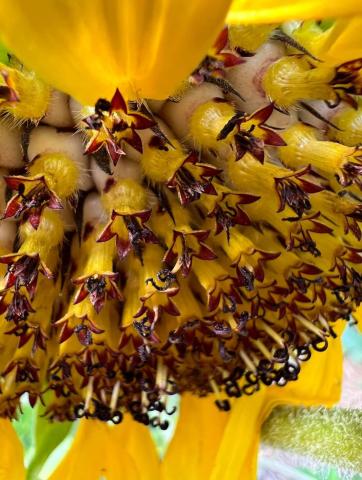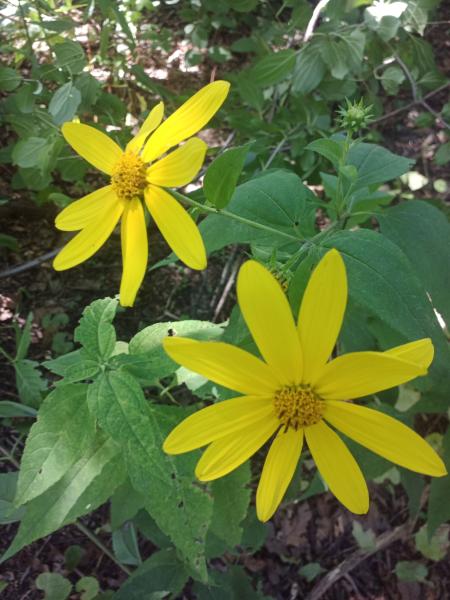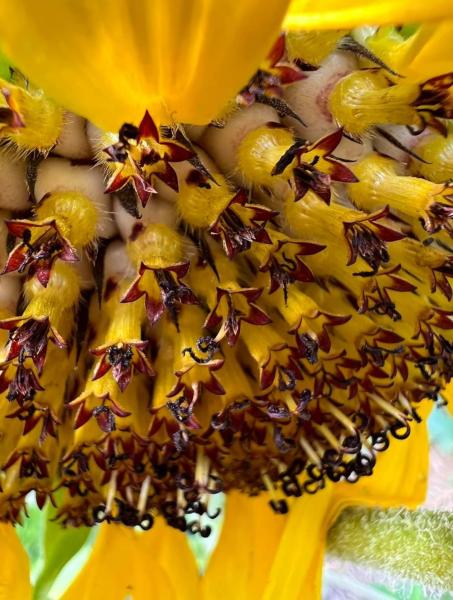
Names and Their Meanings
Sunchoke - Helianthus tuberosus
Pale Woodland Sunflower - Helianthus strumosus
Sunchoke
Description
In our survey, we recorded a wild version of the Sunflower, Helianthus strumosus, the Pale-leaf Sunflower. Indigenous peoples domesticated the Common Sunflower. It has been a tremendously important source of food and oil for centuries. Jerusalem artichokes, more commonly called Sunchokes, may have been part of the Haudenosaunee Creation story; some people tell this story that Sunchokes, like potatoes, grew from Sky Woman’s Daughter’s toes, after she was buried, along with Corn, Beans, Squash, Strawberries, and Tobacco. Sunchokes are sacred foods, and tremendously nutritious – and prolific growers! Frederick Wilkerson Waugh recorded in 1912 that Sunchokes were regarded as a famine food, because they grew so abundantly and were so nutritious. He also recorded in 1912 at Six Nations of the Grand River that Sunflower oil was made into a spread like butter; seeds were eaten as food, used roasted in corn soup with beans, made coffee, and roasted and pounded into oil. Sunflower oil was used to annoint ceremonial objects and oil wooden pieces. It was used for hair oil, and for making medicines (can mix with bear grease). He also recorded that there were two kinds of sunflowers – those with black seed and those with striped seeds.
Conservation Status
No conservation status
Pale Woodland Sunflower
Conservation Status
No conservation status


